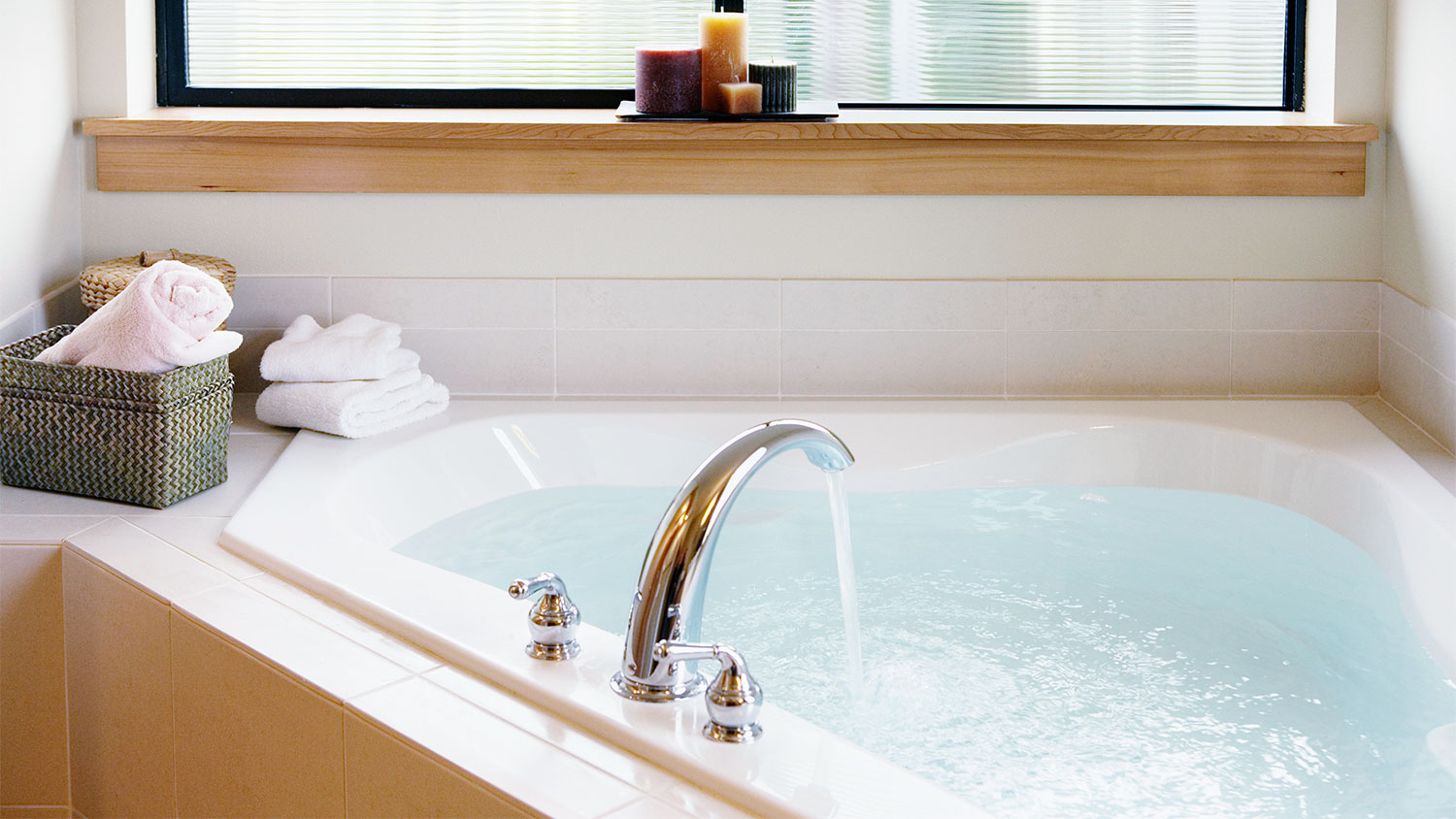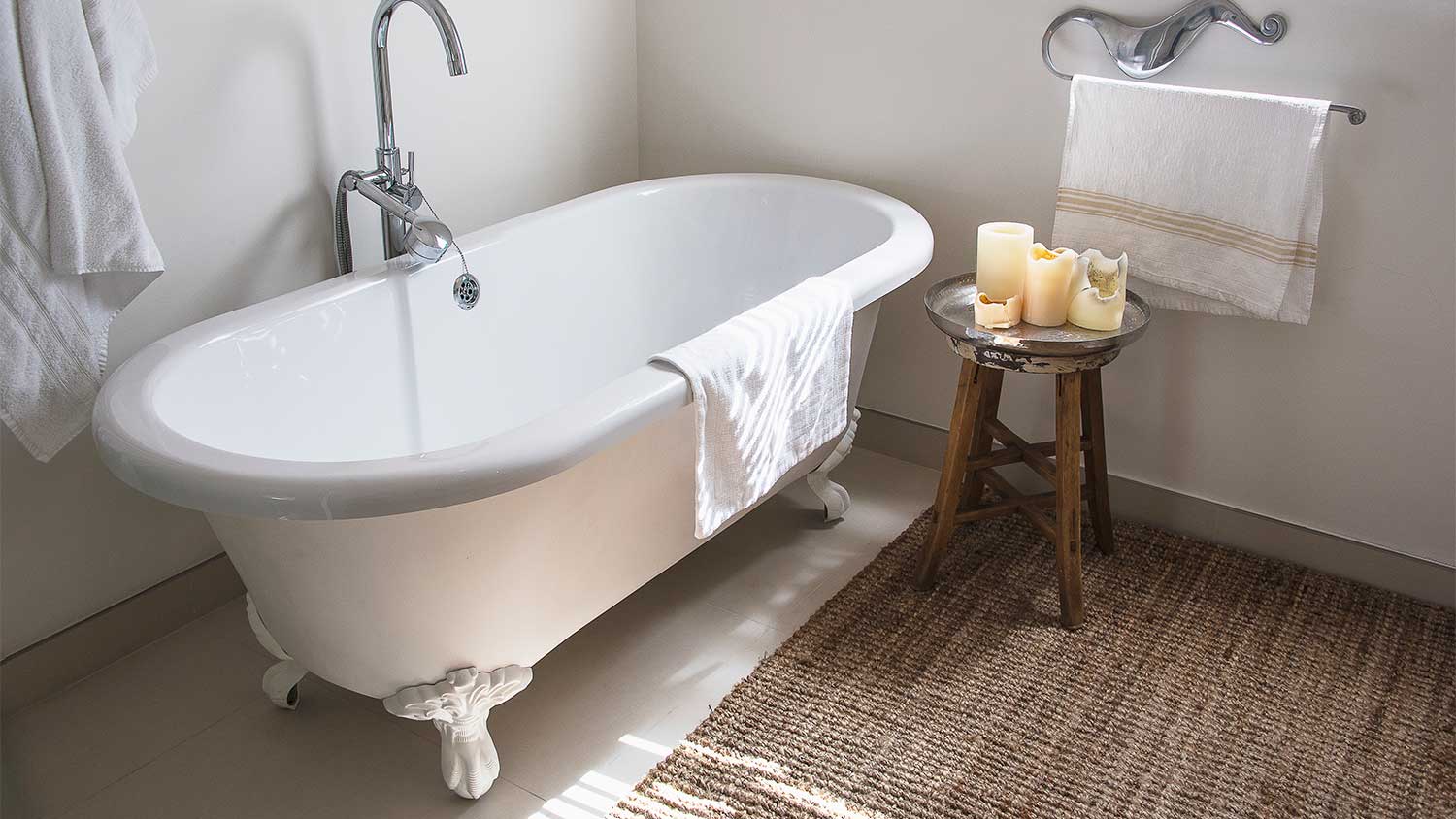
Remodeling your bathroom can add significant value to your home. Your bathroom remodel cost in Columbus, OH will depend on size, fixtures, materials, labor, and other factors.
Keep your home makeover from meddling with your pet’s routine


Maintain regular routines
Create a safe and secure space
Look out for signs of stress
Clear away hazardous materials
Consider alternative boarding options
It’s not just homeowners who can find major remodeling projects stressful. All the disruption can be anxiety-inducing for your four-legged members too. But what should you do with your dog or cat during a home renovation?
With a little forward-planning and careful management, your pets will stay relaxed, comfortable, and out of harm’s way. These tips for keeping your pet safe when remodeling your home will help your furry friends feel fine.
A friendly 200-pound Mastiff is still intimidating to some. Hire a contractor who is comfortable around dogs or cats and doesn’t have any allergies before signing any paperwork.
Whoever you employ should be willing to discuss ground rules, like setting arrival and departure times, the closing of doors and gates, and ensuring they don’t leave out hazardous tools or materials. A contractor with no patience with your pet could make your dog or cat more anxious.
Even if your contractors are massive pet lovers, they aren’t built-in sitters. If your dog is constantly bothering them by jumping up, barking, or begging for lunch, it can be frustrating and distracting. Keeping your pets out of the contractor's workspace lets them do their job more safely and efficiently.
Keep excitable, over-friendly dogs on leash to facilitate calm introductions, and if you have a fearful dog, ensure they have enough space and that workers don’t force contact.
Pets are creatures of habit. During your home renovation, retain as much of your pet’s regular routine as you can (even while the builders are there) to help reduce stress levels and maintain a sense of normalcy. Where possible, stick with normal feeding, potty, walking, playtime, and napping schedules.

If you’re remodeling your kitchen and your pet normally sleeps there, you’ll want to set up a different secure, cozy den space, ideally as far away from any noise and disruption as possible. This might be in a bedroom, a secure pen, or even in the bathroom.
Dogs might appreciate having an open and covered crate or a bed in a corner behind or under a bedroom chair. Cats often like to escape up high or snuggle into a blanketed box or carrier.
Your pet should have lots of positive associations with this space. This is a place where they get to play, eat, have treats, and retreat to at all times. Work on helping them feel comfortable settling there in the weeks before the project begins, and consider having a radio playing relaxing music to drown out the loud noises of any major work.
During home improvement work, it’s not always possible to keep doors and windows closed—at some stages of the project, there might not even be any in that area of your home! Keeping your pets secure in other areas should be a top priority.
Using baby gates, keeping dogs in secure playpens, and being extra vigilant when letting your pets out are all good practices. The last thing you want is an already anxious pet escaping. However, make sure your dogs and cats have collars with tags and up-to-date microchip details as an extra precaution.
Keeping your pet in a secure space during the remodel keeps them out of harm’s way of tools, materials, and other common hazards. If they have access to the work areas, always be vigilant and ask your contractors to be mindful of your pets, too.
Some things to watch out for include:
Nails, tacks, staples, glass, wires, and other sharp materials that can cut paws or cause problems if ingested
Paint and varnish fumes can cause respiratory problems
Solvents, like paint thinner, are highly toxic and can cause severe skin irritation
Even excessive dust and debris are problematic—wipe off paws after they cross the remodel areas.
Looking for signs your pet is getting stressed means you can proactively make further changes to help them remain comfortable for the remainder of the project.
The signs can be different depending on the type of pet you have, but common things to watch out for include:
Tummy upsets and changes in bowel habits
Urinating in the house
Unusual behavior like hiding, not wanting attention, wanting more attention than normal, or even aggression
Shaking
Pacing
Excessive panting, barking, or meowing
Inappetance
Alongside offering a secure, quiet space and a regular routine, some other things you can do to help reduce anxiety levels include:
Using stress-relieving pheromone sprays or plug-ins
Distracting them with brain train games and treat-dispensing toys
Tire them out with good amounts of exercise
Use a calming coat or shirt
Give space when they need it and offer comfort and touch if they seek it out

Suppose you have a very fearful dog or cat, and your home renovation will last for a prolonged period. In that case, it may be safer and less stressful for everyone if you book them into their regular boarding option—whether that’s with an obliging family member, a boarding kennel or a home boarder.
We all know a major home overhaul can be taxing, but for your own health and the well-being of your pets, try to stay calm. Studies show that dogs pick up on their owners' stress levels, which makes it crucial that everyone stay relaxed during a home renovation.
Now that you know what to do with your dog and cat during a home renovation, you can focus on making small changes that’ll keep everyone safe, happy, and calm during construction.
From average costs to expert advice, get all the answers you need to get your job done.

Remodeling your bathroom can add significant value to your home. Your bathroom remodel cost in Columbus, OH will depend on size, fixtures, materials, labor, and other factors.

Small kitchen remodels cost $12,750 on average, depending on the materials, size, labor, and more. Read this to calculate your kitchen remodel costs.

A bidet—stand-alone, attachment, spray nozzle, or toilet combo—reduces toilet paper usage and saves money, but how much is a bidet? Here’s how much you’ll pay.

An updated bathtub can give a bathroom a whole new look. Find out how much it costs to replace a bathtub in Charlotte, NC, including prices by type and labor costs.

Learning how to remodel a house on a budget involves prioritizing projects and figuring out how much of the work you can do yourself to save on labor costs.

An updated bathtub can give a bathroom a whole new look. Find out how much it costs to replace a bathtub in Seattle, WA, including prices by type and labor costs.